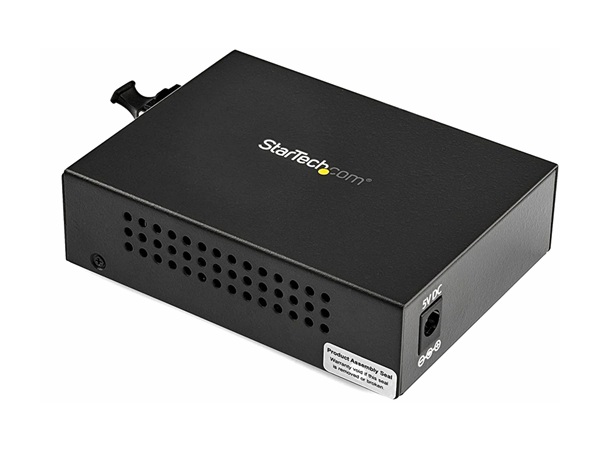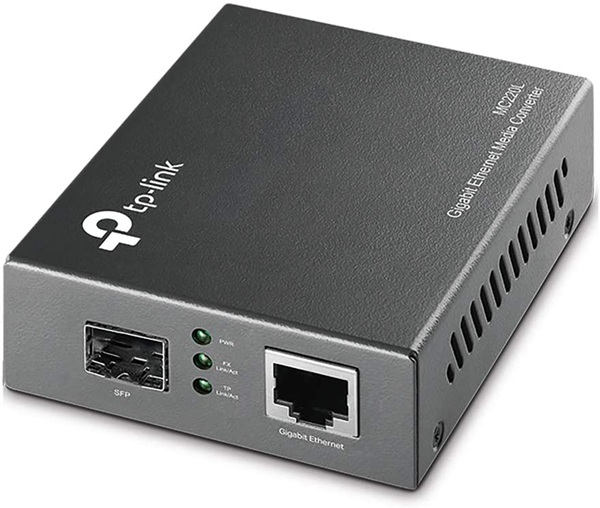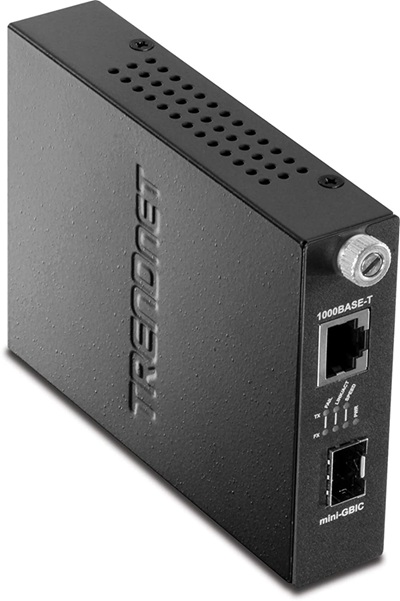Networking Device
What’s the Best Fiber Media Converter for Home & Home Office Use?
Shopping for a new home fiber media converter can be difficult, but we hope that this detailed buying guide will make it a little easier. We’ll tell you what features to look for, what to avoid, the top-rated fiber media converters on the market today, and how to get the most out of them.
With the COVID-19 fear compelling everyone to continue working on their regular routines at home, many consumers now require a fiber media converter that would otherwise be available in an office setting. But how would you know what to acquire if you’ve never had an ethernet fiber media converter before?
DON’T be fall for super cheap ethernet fiber media converters! Most (if not all) cheap Ethernet fiber media converters consume a lot of power, skip the testing process, use inferior optical transceivers and power adapters. It has a very high failure rate and short lifetime, so it can not support a stable and reliable network, forcing you to buy costly replacements frequently.
Do your research before buying. Buying an ethernet fiber media converter without researching isn’t the most logical thing to do, especially if you’re unsure if that fiber media converter truly fits your networking needs and budget.
The finest fiber media converter for home use, in a nutshell, depends on the ethernet network you want to extend while at home.
Fiber Media Converter Terms You Should Know
What Is A Fiber Media Converter?
Media converters are networking devices that convert Ethernet or other communication protocols from one cable type to another, commonly copper CATx/UTP to fiber. Their pair used to add a fiber segment to copper networks increases cable distance and resilience to electromagnetic interference. They are suitable to extend LANs, convert connection speeds or fiber modes.
Fiber-to-Copper Media Converters
Fiber-to-copper converters allow copper-based Ethernet devices to be connected through a fiber-optic network. This allows the fiber optic cable to be used to expand communications over larger distances, shields data from noise and interference, and future-proofs a network with more bandwidth capacity.
PoE Media Converters
Power-over-Ethernet (PoE) media converters give PoE-powered devices dependable and cost-effective fiber distance extension. Over copper UTP cabling, PoE media converters may power devices such as IP phones, video conferencing equipment, IP cameras, and Wi-Fi devices.
Fiber to Fiber Media Converters
Fiber-to-fiber media converters connect several fiber-optic networks and facilitate wavelength conversion. They link single-mode and multimode fibers, as well as dual and single fibers.
SFP Fiber Media Converters
SFP media converters are intended for use in extended IP network applications. They provide one or more open SFP ports for the usage of SFP transceiver optics. This media converter provides the SFP technology flexibility for Gigabit Ethernet transmission over optical fiber. You may choose your own SFP transceiver based on your needs, and it is plug and play, effortless.
Should you choose a Commercial or Industrial Media Converter?
If you need a fiber media converter to use at home, then you need a commercial one, which has a typical range of operating temperatures. On the other hand, industrial media converters can withstand harsh and extreme environments.
What Is the DIP Switch
DIP switch is an abbreviation for dual in-line package switch. It is a primary and low-cost component that can aid in selecting and switching numerous hardware or device options. To enable and disable specific functionality, users flick each switch between the on and off positions.
What is Jumbo Frame?
A jumbo frame is an Ethernet frame with a payload larger than the 1,500-byte maximum transmission unit (MTU). It can be up to 9,000 bytes long. The media converter can process fewer frames to fit a greater payload into each frame. As a result, activating jumbo frames can boost network performance by increasing the efficiency of data transfers. To enable the passage of the giant frame beneath a specified size, pull the switch (like 9k bytes; it may vary from different vendors). It is better to know the supported jumbo frame before buying new media converters.
Warranty
Many fiber media converters come with a one-year guarantee that usually only covers machine problems. If you spent a lot of money on a fiber media converter, or if your company has a lousy track record with fiber media converters in the past, extended warranties could be worth it.
Best Ethernet Fiber Media Converters
StarTech Multimode (MM) LC Media Converter
When used in full-duplex mode, this LC fiber media converter has a gigabit fiber and a maximum data transmission rate of 1000Mbps. Because of its multimode SFP, it converts a copper RJ45 Ethernet connection to a gigabit fiber connection. The SFP transceiver, on the other hand, maybe removed. As a result, you have the option to modify it if you so want. This kind of adaptability will assist you in putting together anything that you genuinely require.
This fiber media converter may be of interest if you need to link workstations to switches across long distances. Even for shorter-distance connections, it is a cost-effective alternative.
This Startech.com fiber media converter can produce high-performance for a more extended period due to its sturdy metal shell. It comes with a two-year guarantee and technical assistance.
OPTCORE offers a similar LC fiber media converter at an even cheaper price point, just $11.0 each.
TP-Link MC220L SFP Fiber to Ethernet Converter
The MC220L is a media converter that converts 1000BASE-SX/LX/LH fiber to 1000BASE-T copper or vice versa. The MC220L is intended for use with multi-mode/single-mode fiber cable using the SC/LC-Type connector and is designed per IEEE802.3ab 1000Base-T and IEEE802.3z 1000Base-SX/LX/LH standards. When using multi-mode fiber, it transmits and receives data at 850nm, and it sends and receives data at 1310nm when using single-mode fiber. This module also has the option to be utilized as a stand-alone device (no chassis required) or with TP-19″ LINK’s system chassis, Auto MDI/MDI-X for the TX port, and front panel status LEDs. When using multi-mode fiber, the MC220L can broadcast for up to 0.55 kilometers (0.342 miles) and 10 kilometers (6.2 miles) when using single-mode fiber.
TRENDnet 100/1000Base-T to SFP Fiber Media Converter
TRENDnet’s TFC-1000MGA 100/1000BASE-T to SFP Media Converter is a dependable Plug-and-Play Fiber-to-Ethernet converter in a small package. This adaptable fiber converter works with both Multi-Mode (SX) and Single-Mode (LX) fiber standards and can transmit data over lengths of up to 80 kilometers (50 miles).
The Mini-GBIC slot and Gigabit Ethernet port auto-negotiate transmission rates between 100 and 1000Mbps. The device status is communicated via diagnostic LEDs on the front of the converter. With an internal dip-switch, you may control Auto-Negotiation (Forced/Auto-Negotiation) and Link Loss Return (Enable/Disable). This rugged metal-encased converter may be utilized as a stand-alone device and is compatible with TRENDnet’s extendable 16-Bay Fiber Converter Chassis System, model TFC-1600.
OPTCORE similar SFP media converter are a fraction of the price of the original TRENDnet brand at just $11.00 each!
OPTCORE 10/100/1000Base-T RJ45 to 1000Base-FX Open SFP Fiber Media Converter
The MC-GSA11-L is a Gigabit SFP media converter that converts copper 10/100/1000BASE-T to fiber optic 1000BASE-X. It has an open Gigabit SFP slot, which allows you to select the MSA-compliant pluggable optics that best fit your fiber connection requirements.
This SFP fiber media converter enables you to choose from various SFP transceivers to suit your Singlemode or multimode cabling systems. Including 1G SFP transceivers, BiDi SFP transceivers, and CWDM SFP transceivers, supporting transmission distances of up to 160 kilometers (99.4 miles) depending on the SFP modules.
The Gigabit SFP media converter provides a versatile and cost-effective solution for extending the reach of an existing copper network, the life of non-fiber-based equipment, or the distance between two devices, allowing you to maximize the utilization and performance of legacy equipment.
Final Words
There’s a lot to consider while looking for the best fiber media converter since so many are on the market and new ones coming out every month. It’s simple to limit these possibilities by doing some research and comparing them to what’s best for you. Before you buy, make a list of the features you want. Remember to consider the maintenance costs and expansion options for fiber media converters, which offer greater flexibility with SFP transceivers. Wishing you luck and staying healthy!











